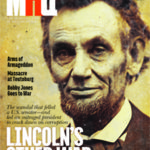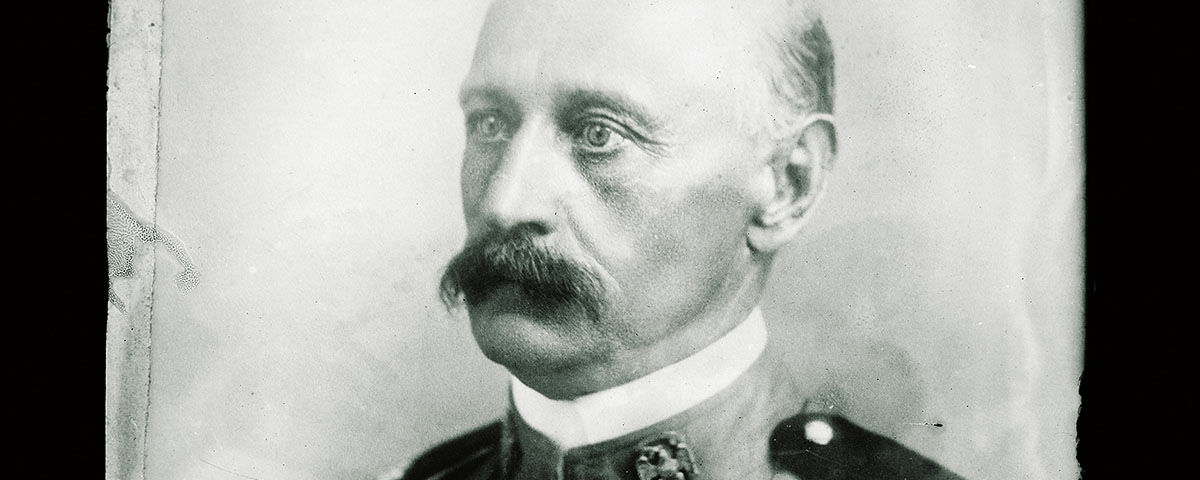In 1902 Brigadier General Jacob H. Smith was court-martialed for ordering American soldiers to kill thousands of Filipino civilians.
COUNTERINSURGENCY OPERATIONS, BY THEIR VERY NATURE, OFTEN REQUIRE MILITARY PERSONNEL to operate in the midst of civilian populations. In such cases, the judicious and lawful use of military force becomes as important as direct combat. When lawful warfare gives way to criminal conduct, it is sometimes because individual soldiers step over the line, but at other times it results from unlawful orders from above.
In terms of its ultimate outcome, the Philippine-American War of 1899–1902 has historically been regarded as the U.S. Army’s most successful war of counterinsurgency. Still, it was marked by allegations of widespread killing of civilians, the torture of prisoners, and, on occasion, orders that flagrantly violated the laws of war. The most infamous incident of the war was the one that resulted in the “Howling Wilderness” court-martial of Brigadier General Jacob H. Smith, who was charged with ordering his troops to lay waste to the island of Samar in 1902.
Smith’s long military career was distinguished mostly by his penchant for embroiling himself in scandal and litigation. Originally an officer in a volunteer regiment during the Civil War, he obtained a commission in the Regular Army and embarked on what turned out to be one of the most checkered careers of any military officer of the era. In 1869 he gained a military appointment as a judge advocate, but it was quickly revoked after officials in the War Department learned that he had repeatedly perjured himself during an earlier investigation into his rampant wartime profiteering. Over the next 20 years Smith was court-martialed three times—for reneging on gambling debts, for conduct unbecoming an officer, and for having made false statements. He had demonstrated bravery during the Spanish-American War, but he was unquestionably intemperate and utterly unreliable in positions of authority. The fact that he was entrusted with a position of great responsibility in the Philippines “must register as one of the gravest blunders of the entire war,” as the army’s official history later noted.
The blunder grew out of the archaic military tradition in which officers were promoted to flag rank based on seniority rather than merit to reward them with a higher pension on the eve of their retirement. When Smith was recommended for promotion to brigadier general in 1901, William Howard Taft, the head of the Second Philippine Commission (who would soon become governor-general of the Philippines and, later, president of the United States), endorsed the move with the comment that Smith had “reached a time when promotion to a Brigadier Generalship would worthily end his services, for I believe it his intention to retire upon promotion.” Things did not play out quite the way Taft expected. If Smith ever truly intended to retire on receiving his general’s star, he changed his mind as soon as the new shoulder straps were on his uniform, declaring that he was staying in the service.
Ordered to quell Filipino resistance on Samar after an American garrison was nearly wiped out at Balingiga, Smith immediately demonstrated the lack of restraint that would become his hallmark. “I want no prisoners,” he told Major Littleton W. T. Waller, the Marine Corps officer who was commanding operations in the field. “I wish you to kill and burn. The more you kill and burn, the more you will please me. I want all persons killed who are capable of bearing arms in actual hostilities against the United States.…The interior of Samar must be made a howling wilderness.”
Waller asked for clarification of the order: What, exactly, was meant by “all persons…capable of bearing arms”? Smith replied that, as far as he was concerned, any Filipino male over the age of 10 was capable of bearing arms and thus was a legitimate military target—regardless of whether he was hostile or armed.
To his credit, Waller did not carry out the full homicidal lunacy of Smith’s orders, though he did order the summary execution of 11 Filipino porters whom he believed were conspiring against his troops. Allegations that American troops were guilty of atrocities in the Philippines were already being trumpeted in anti-imperialist newspapers and echoed by members of Congress who opposed President Theodore Roosevelt and his administration’s prosecution of the war. The War Department’s initial inquiry into the matter had not satisfied the critics. Then came news of Waller’s actions on Samar. Waller was arrested and charged with murder under the 58th Article of War.
Waller, acting as his own attorney, argued that his order to execute the porters was an act of military retaliation authorized by General Orders No. 100, the legal code introduced into U.S. military law in 1863 and still in effect in 1902. Waller’s easiest defense might have been to simply tell the court that he was acting in accordance with Smith’s orders, but he refused to do so—until Smith appeared in court as a witness for the prosecution.
Almost as soon as he took the stand, Smith perjured himself by saying that he had never “given Waller any special instructions on the conduct of the campaign,” and, further, that he had not ordered mass killing. Waller was therefore forced to call as witnesses three officers who testified that they, too, knew of Smith’s “howling wilderness” orders. In light of that, the court acquitted Waller by a vote of 11–2.
The focus of official retribution now turned to Smith. Though he was already complicit in perjury and in ordering the murder of civilians, he was arraigned only on a charge of “conduct to the prejudice of good order and discipline” when he appeared before a court-martial in Manila. Offering a rather bizarre rationale—and this was entirely in character—Smith pleaded not guilty to the charge but also freely admitted that he had issued the very orders to Waller that he had earlier denied giving. Smith also claimed that General Orders No. 100 permitted the extreme tactics he had ordered on Samar, and he tried to draw a comparison between his campaign and Major General William Tecumseh Sherman’s March to the Sea during the Civil War.
Smith’s defense counsel, Colonel C. A. Woodruff, produced a long list of officers from Smith’s command on Samar who testified that they had chosen to ignore the full scope of his “kill and burn” orders and had never deliberately targeted Filipino civilians. This defense stopped just short of arguing that Smith was such an incompetent commander that his subordinates could choose to disregard his orders as they wished. In his closing remarks, Woodruff argued that the only reason “this gray haired, wounded, victorious general” was being “exposed to the indignity of a court-martial” was because of “an overwhelming or noisy public sentiment in the United States, based upon rumors for some unknown, and I believe, ignoble purposes.”
The officers of the court returned a guilty verdict against Smith but argued for a lenient sentence “in view of the undisputed evidence that the accused did not mean everything that his unexplained language implied; that his subordinates did not gather such a meaning, and that the orders were never executed in such sense.”
President Roosevelt approved the verdict and the court’s sentencing recommendation and ordered that Smith be immediately retired from service—a far lighter punishment than he deserved. True to form, Smith promptly contradicted everything his attorney had argued on his behalf, boasting to reporters that he “meant every word” of his notorious orders. After nearly 30 years in the army, Smith finally left the military and the public eye. Fading into obscurity, he died in San Diego in 1918 at age 77.
Smith’s case provides a stark example of the dangers of an obsolete military promotion system that allowed officers to remain in service even after their unfitness for command and their moral failings in positions of responsibility were demonstrated beyond doubt. It also underscores an essential fact of military law: that an officer is legally responsible for every order given. MHQ
JOHN A. HAYMOND is the author of The Infamous Dakota War Trials of 1862: Revenge, Military Law, and the Judgment of History (McFarland & Company, 2016). His newest book, The American Soldier 1866–1916: The Enlisted Man and the U.S. Army in Transition, will be published by McFarland in early 2018.
[hr]
This article appears in the Spring 2018 issue (Vol. 30, No. 3) of MHQ—The Quarterly Journal of Military History with the headline: Kill Orders
Want to have the lavishly illustrated, premium-quality print edition of MHQ delivered directly to you four times a year? Subscribe now at special savings!






